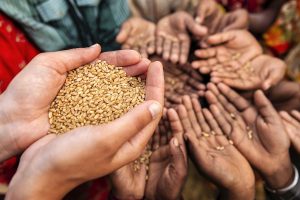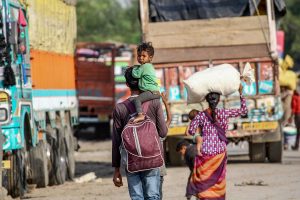Odisha has earned the distinction of becoming a leading state in the county to accord habitat rights to the Particularly Vulnerable Tribal Groups (PVTGs) under the Forest Rights Act (FRA), officials claimed on Thursday.
Of the 4.5 crore people in the state, around 23% are Scheduled Tribe (23%). Odisha houses 13 PVTGs – highest among all the states and Union Territories of India. The PVTGs inhabit 1,683 villages, settlements scattered across 285 gram panchayats (GPs) under 42 blocks and 14 districts of Odisha. There are as many as 1,79,742 households with a total population of 7,73,092. All the 13 PVTGs have different socio-cultural and socio-political significances, different habitat aspects.
Advertisement
With the recognition of habitat rights of Juangs in Keonjhar district on Wednesday by the District Level Committee (DLC), Odisha has become a forerunner with three habitat rights recognised for the PVTGs, the maximum in India, said an official of the Secretary Scheduled Tribe, Scheduled Caste Development department on Thursday.
Paudi Bhuyan of Deogarh district was the first PVTG community in the state to receive the habitat rights title on March 7, 2024. While habitat rights of Paudi Bhuyan has been recognised over 32 villages under Barkote block, habitat rights of Juangs in Jajpur district has been recognised covering 13 villages under Sukinda block and habitat rights for Juangs in Keonjhar district has been recognised covering 134 villages across four blocks.
PVTGs have been the stewards of their ancestral lands for generations, practising sustainable living and preserving their rich cultural heritage. This approval not only affirms their rights but also reinforces the importance of respecting and upholding the traditions and lifestyles of indigenous populations. Recognition of habitat rights under FRA is a significant step in recognising and safeguarding the rights of indigenous communities.
So, the Juangs of Keonjhar will become the sixth such title awarded in India under the category along with the Juangs of Jajpur, Paudi Bhuyans of Deogarh in Odisha and Bharia PVTG in Madhya Pradesh and Kamar PVTG and Baiga PVTG in Chhattisgarh, having legal title and rights over their forest habitats.
“Our pro-people government is committed to the overall development of tribal communities, especially the PVTGs. With this recognition of habitat rights, our efforts will be more defined and concrete,” Minister ST & SC Development Nityananda Gond said.
Habitat for the PVTGs refers to an area where these communities have both spiritual and material connections. Spiritual connection implies an area which is important to fulfil the socio-cultural needs of the community. This area includes burial grounds, birth places, temples, deities, ancestral lands, or areas used for any other socio-cultural purposes, such as festivals and processions. Habitat rights under FRA can be defined as a bundle of rights comprising of these connections with the landscape: livelihood, social, and cultural practices embedded in the territory that forms their habitat.
“The habitat rights for PVTG communities is a remarkable achievement and we would be planning for more as a major chunk of our state’s population (around 23 per cent) are tribals. Our efforts will be more focused on the welfare of these communities and especially for the PVTGs, across the state”, Secretary ST, SC Development, Minorities and Backward Classes Welfare Department Roopa Roshan Sahoo said.











